Rivalries between scientists are often big and filled with endless debates and arguments, but sometimes those rivalries can get very personal and extreme.
The Bone Wars are a good example of such a conflict between two scientists and one that ended with a social and financial decline for both of them. However, it would also go on to lay the foundations of the modern science of paleontology.
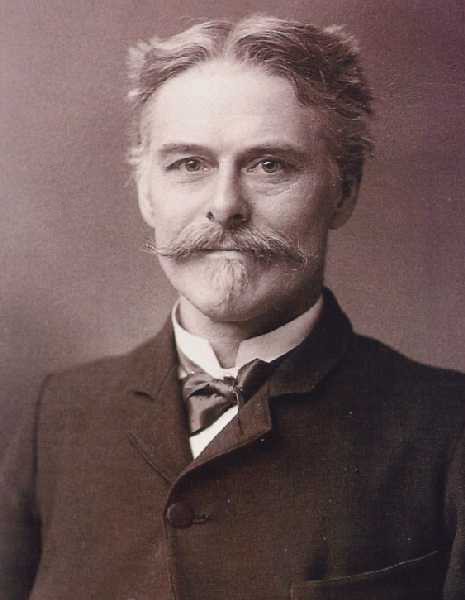
This episode in the history of science, also known generally as the “Great Dinosaur Rush”, started in the 1870s and lasted until the death of one the protagonists in 1897. During this period of fossil prospecting and excavation across the American West, two prominent paleontologists used any means at their disposal to obtain as many fossils for themselves as possible.
Edward Drinker Cope (from the Academy of Natural Sciences in Philadelphia) and Othniel Charles Marsh (from the Peabody Museum of Natural History at Yale) used methods such as bribery, theft, destruction of bones, and attacking each other in scientific publications just to ruin the reputation of the other.
Let us introduce the two sides of this conflict. Cope and Marsh were different in many ways; for starters, they came from different backgrounds. Cope came from a wealthy Quaker family living in Philadelphia. Even as a young man he wanted to be a naturalist, and in 1864 he became a member of the Academy of Natural Sciences and started lecturing zoology at Haverford College. He also had the opportunity to join Ferdinand Hayden (one of the first geologists that surveyed the Rocky Mountains) on his western expeditions.
Marsh, on the other hand, came from a poor family from Lockport, New York, but he was fortunate to be supported by his philanthropist uncle, George Peabody – the co-founder of J.P. Morgan & Co and regarded as the father of modern philanthropy. Marsh managed to convince him to found the Peabody Museum of Natural History and place him as the head of the institution. This title and the inheritance he received after Peabody died put him in a financially stable situation.
When the two naturalists met in Berlin in 1864, there wasn’t even a hint of what would become a bitter rivalry.
The two of them even named species after each other, but soon their personalities came to the surface. Cope was combative and quick-tempered, while Marsh was more stable, slow, introverted, and methodical. They also supported different evolutional theories; Cope was a Neo-Lamarckist (the theory that characteristics acquired during an organism’s lifetime are inherited by the following generation), and Marsh was a Darwinist. The only thing that both of them shared was their suspicious nature and confrontational spirit.
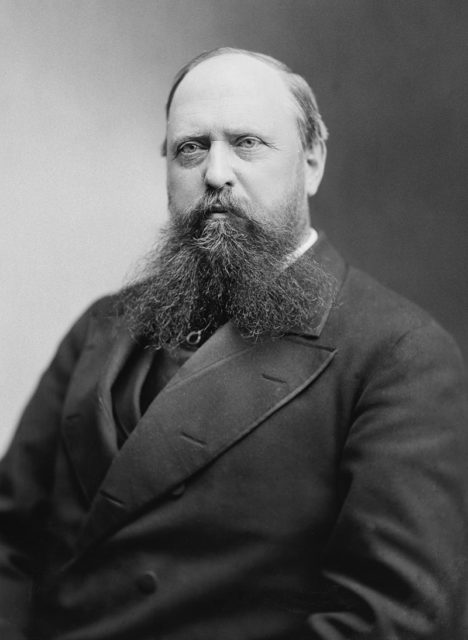
The first signs of rivalry between Cope and Marsh appeared during a fossil-collecting expedition to Cope’s marl pits in New Jersey. There, William Parker Foulke discovered the first full dinosaur skeleton in North America (Hadrosaurus). After the expedition, the paleontologists parted in a friendly manner, but Marsh, without Cope’s knowledge, bribed the pit workers to send him all the fossils that they found.
Very soon, they started to attack each other publically through the newspapers and ended their wavering friendship. On one occasion, Marsh humiliated his colleague by pointing out that Cope had made a huge mistake in his reconstruction of the plesiosaur Elasmosaurus – his head was placed where his tail was supposed to end. This mistake cost Cope a lot, financially and in terms of reputation; he was forced to buy every copy of the journal where it was published so that he could cover it up. In retribution, Cope started collecting fossils in some Kansas and Wyoming locations that Marsh considered to be his private turf.

As more and more surveys were done, the search for more fossils lead Marsh and Cope to the rich bone beds across Colorado, Nebraska, and Wyoming.
This was the start of a decade of aggressive fossil excavation in which the Bone Wars saw their biggest battles. In the beginning, Cope was in a better situation. He received a position on the US Geological Survey under Ferdinand Hayden, and in 1872 he went on his first expedition to the bone beds of Wyoming. Cope wanted to grab all the glory for himself and angered his fellow paleontologists, most of all Marsh. Plots and plans of espionage soon began to develop.
On his next expedition to investigate the reports of rich bone findings near Black Buttes Station, Cope’s luck started to wane.
After Hayden failed to send him the funds and equipment to continue his expedition, he was forced to pay for it by himself. Later, he also found out that two of the members of his expedition were Marsh’s men.
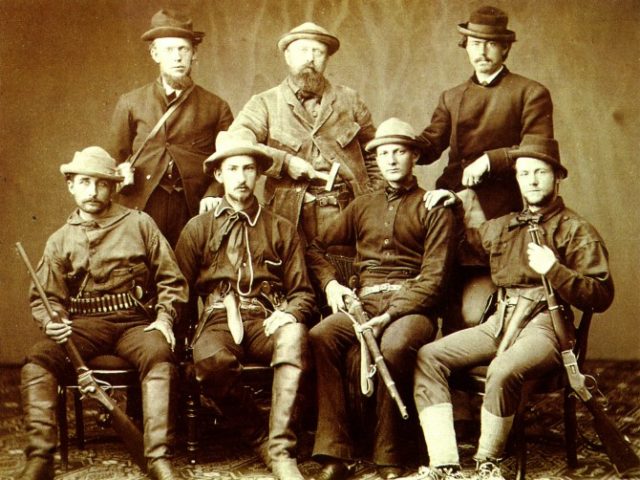
Cope bribed them and got them on his side. When Marsh found out about it, he was outraged. The relationship between the two deteriorated further when some of Marsh’s material was forwarded to Cope by mistake. However, Cope returned the fossils and mocked Marsh for his incompetence.
By 1873, Cope and Marsh had become very hostile towards each other, while at the same time making great discoveries of ancient bones in the rich western bone beds. Because collaboration between them was non-existent, Cope and Marsh often published the same findings and same specimens under different names.
They were aware that many of their fossils had already been described by their rival. It turned out that Marsh used a better nomenclature, while none of Cope’s names were considered valid. When Cope heard that Marsh had invented a new order of mammals (Cinocerea) for a new species, he was again humiliated, but helpless to change anything because his rival’s classification had already been accepted.
In 1873, Marsh made his last expedition to be sponsored by Yale. He was a heavy spender, and this time he decided to make the 13 students that accompanied him pay for their own trip. The final cost of the trip for Yale was $1857.50, instead of the $15,000 that he had spent during his last expedition. After this trip, Marsh started using a different tactic – he paid local diggers and collectors to send him materials. He already had enough bones to keep him busy for years, but he was hungry for more.
During the mid-1870s, Cope and Marsh went to South Dakota where many fossils were discovered during the gold rush in the Black Hills. The whole territory was controlled by the Sioux, so if Marsh wanted to dig there, he needed the support of Chief Red Cloud. To gain it, Marsh promised him a big payment and that he would lobby for the proper treatment of the Sioux when he returned to Washington DC. He was granted permission to dig, but when he had collected enough fossils, he escaped with the loot before the Sioux were able to catch him. Later, he spoke on behalf of Red Cloud but probably out of some ulterior political reasons.
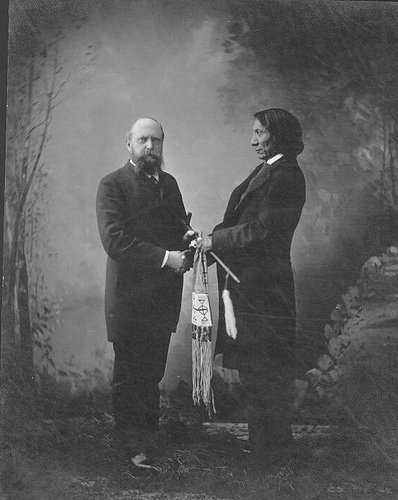
In 1877, while the Transcontinental Railroad was being constructed, Marsh received a letter from Wyoming. Two railroad workers that went by the names of Harlow and Edwards (it was later found out that their real names were Carlin and Reed) told him that there were many fossils to be found in Como Bluff.
They also told Marsh that other men were searching for fossils in the area.
He guessed that those were Cope’s men and immediately sent money to Carlin and Reed, begging them to send him fossils. Reed started sending large shipments of fossils throughout the following year. Como Bluff was a dream for every paleontologist, and it made Marsh famous by providing him the bones of the Stegosaurus, Allosaurus, and Apatosaurus. After a while, Carlin was not satisfied with Marsh’s delayed payments and defected to Cope’s side.
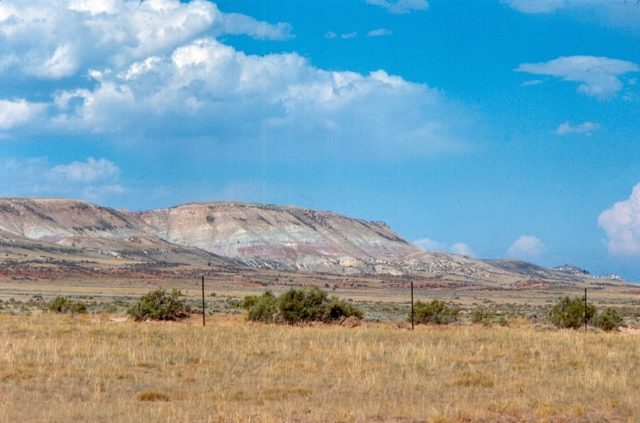
The digs at Como Bluff lasted for 15 years, and both Marsh’s and Cope’s armies of fossil diggers suffered a lot. They were exposed to the weather, they were a constant target for sabotage and espionage, and they lived in poor conditions.
The two rivaling paleontologists were so competitive that they even destroyed their smaller or damaged finds just to prevent them from being taken by their opponents. They also backfilled the excavation pits with dirt and rock, and on one occasion, workers from the different teams threw stones at each other.
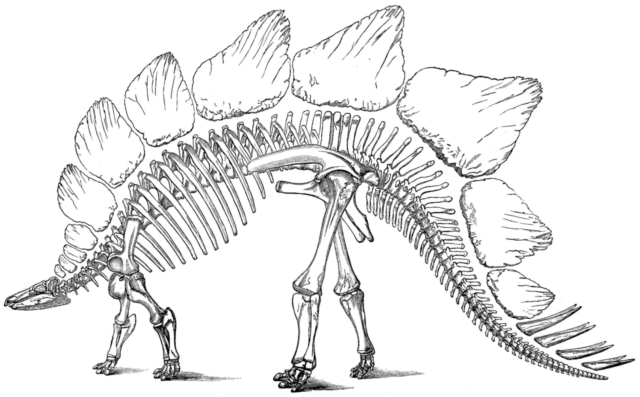
During the late 1880s, both sides were exhausted from the constant digging, so they turned their attention to public humiliation. Now Marsh was in a better position as the head of the consolidated government survey, while Cope had trouble finding a job because of Marsh’s friends in higher educational circles.
Cope was left with almost no money, and he was forced to dig for fossils again. March slowly lost all of his allies due to his unwillingness to share discoveries and due to his late payments. For a brief time, his opponent had more fortune by becoming the head of the Texas Geological Survey, but Marsh beat him again when he has rewarded the Cuvier Medal, the highest paleontological award.
This paleontological war between them lasted until Cope’s death in 1897, and even then it still wasn’t finished. Both Marsh and Cope were left without a penny, and their social reputations were ruined. They were forced to sell their houses and live in rented or mortgaged accommodation. Finally, when Cope fell ill, he challenged Marsh one last time by donating his brain so it could be measured, hoping that it would be larger than that of his opponent. In their day, the size of the brain was seen as a measure of intelligence. Unfortunately, Marsh never accepted to do the same, so Cope’s skull is still kept at the University of Pennsylvania.
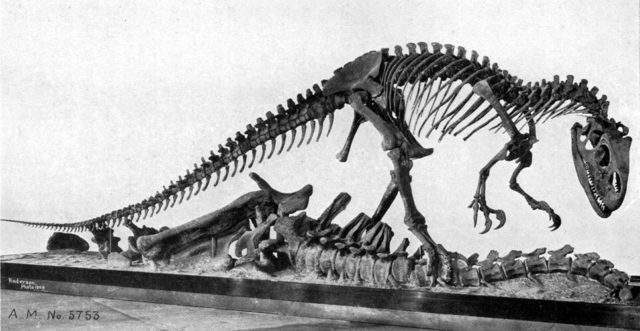
Although statistically Marsh won the war by discovering 80 dinosaur species, and despite their personal issues, their cumulative discoveries helped to define the then undeveloped science of paleontology.
Related story from us: Archaeology in 2016 – The ancient finds of the year that changed the world
Before their findings, there were only nine named dinosaur species across North America. At the same time, they also did a lot of harm to American paleontology. Their destructive methods destroyed the chance of further discoveries on some locations and their contradictions around the classification of species and their names confused the science world for decades.
